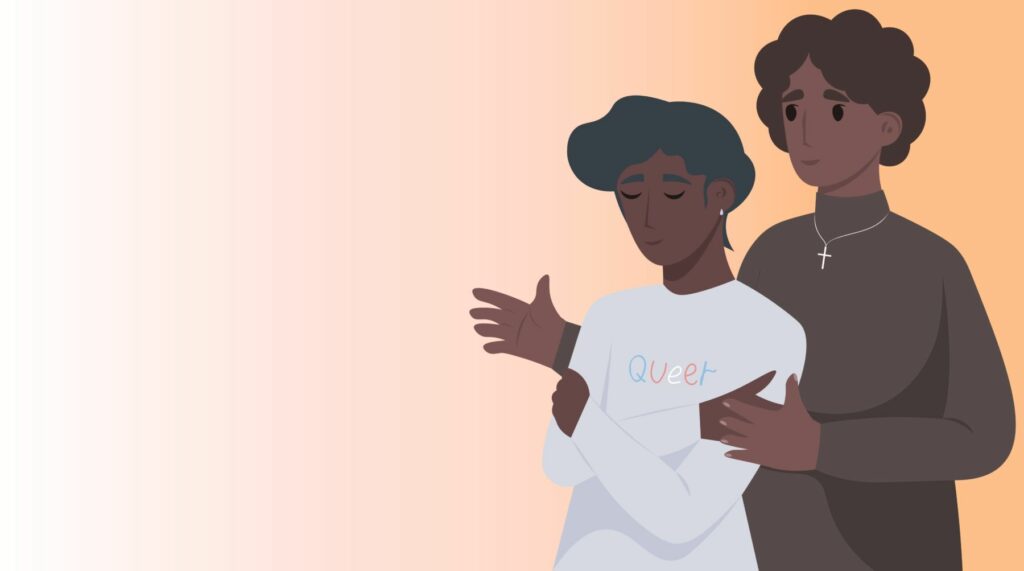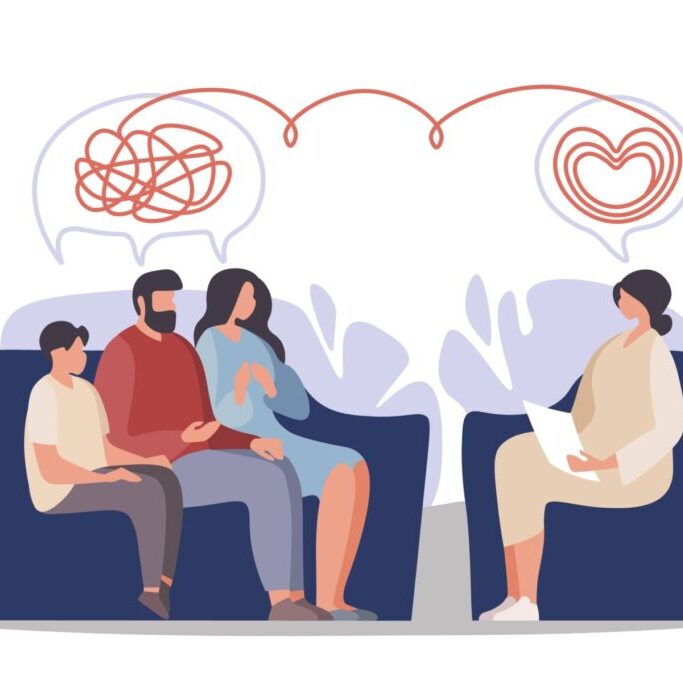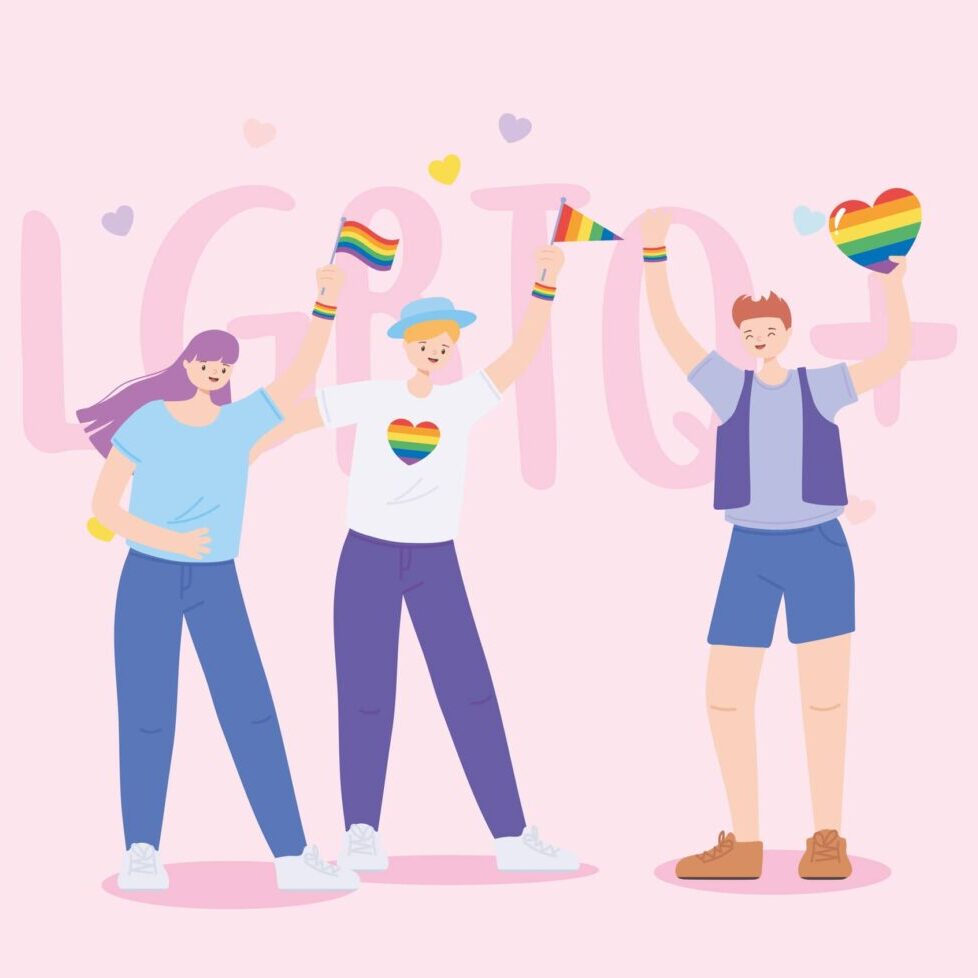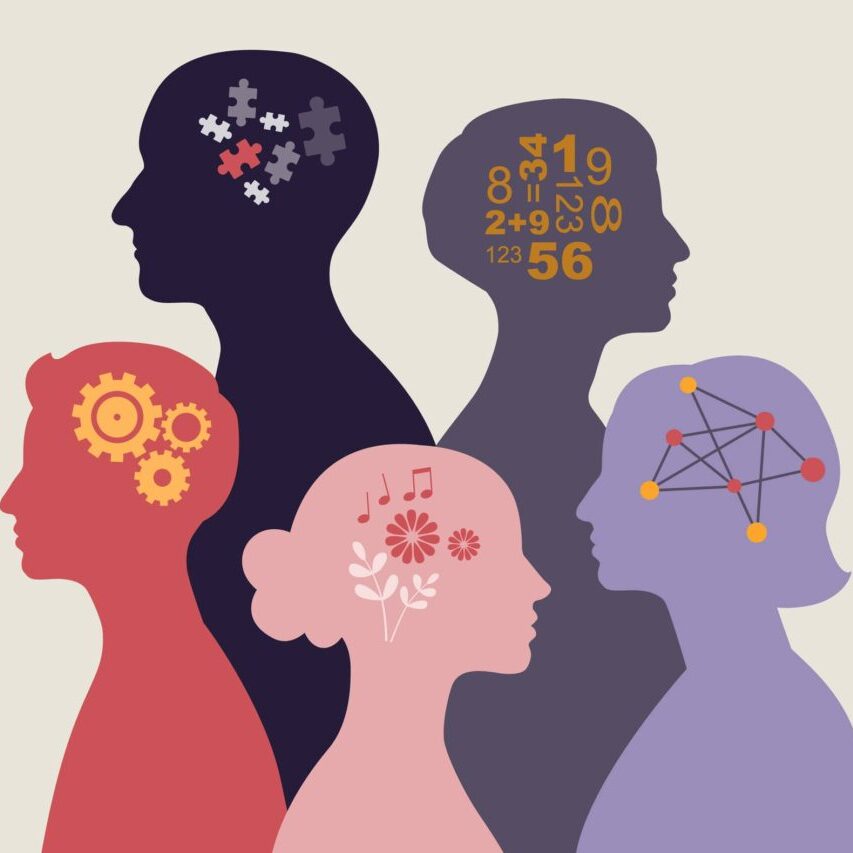Navigating LGBTQ Identities and Religion

Navigating LGBTQ+ identities within religious contexts is often a deeply personal and complex journey. The relationship between being LGBTQ and religion has historically been fraught with tension, misunderstanding, and even harm, but there are gradual changes. Today, many religious groups are evolving in their views and practices, creating spaces where religion and LGBTQ identities can be integrated within a community of support.
Historically, many fundamentalist religions have treated LGBTQ+ people harshly, often deeming non-heteronormative identities and behaviors as sinful or morally wrong. (In fact, we’ve written here about religious trauma afflicting many from which many queer people have been victims.)
Notably, the narrative of judgment and shame is not universal within all religious communities. For example, denominations such as Reform Judaism and the Episcopalian Church have embraced more inclusive interpretations, openly supporting LGBTQ+ members. Despite this evolution, the intersection of religion and LGBTQ identity is often fraught with distress and complexity.
Religion and LGBTQ Identities are a Complex Intersection
For individuals grappling with the intersection of their sexual orientation and/or gender identity and their faith, the journey can be challenging. Questions about sin, acceptance, and the possibility of reconciling one’s identity with religious beliefs are common. For example, a young Catholic might fear that their same-sex attractions are sinful and worry about their spiritual well-being.
Another common struggle is the fear of coming out in a religiously conservative environment. For someone who identifies as LGBTQ+ and is part of a strict religious family, the fear of rejection or even expulsion can be overwhelming.
The relationship between romantic and sexual attraction can also be a source of confusion for many queer people from religious backgrounds. Navigating sexual and romantic norms within religious beliefs can be challenging.
How can I help myself navigate religion and my LGBTQ identity?
Despite its complexities, the journey to healing and acceptance of religion and LGBTQ identity is possible through thoughtful and compassionate steps. You might consider:
- Embrace Self-Acceptance and Compassion – Understand that your identity is valid, and you are deserving of love and respect. Practicing self-love and affirming your worth can build a strong foundation for navigating external challenges. In addition to personal reflection, exploring religious texts and teachings that promote compassion and inclusivity can be empowering. Websites like Soulforce and The Institute for Welcoming Resources offer extensive guides on faith and LGBTQ+ issues, providing alternative perspectives that challenge exclusionary interpretations of religious doctrine.
- Navigate Family Expectations, Coming Out, and Boundary Setting – Deciding when and how to come out to a conservative and religious family involves careful consideration of the potential risks and benefits. Each person’s situation is unique, and there is no one-size-fits-all answer. For some, waiting until they have a safe environment might be the best option, while others might find it liberating to come out sooner. It’s crucial to weigh factors like personal safety, potential support systems, and the likelihood of positive or negative reactions from family members.
Exploring online support groups or groups, like those offered at Chicago’s Center on Halsted or Howard Brown Health’s office around Chicago, can provide a sense of community and understanding without immediate risk. In less conservative families, family expectations can still conflict with your identity. It is crucial to set boundaries to protect your mental and emotional well-being. Communicate your needs clearly and assertively, and remember that it’s okay to limit interactions that are harmful to your sense of self. - Balance Differing Beliefs – A key part of the healing process is learning to balance your beliefs with those of others. It is possible to respect others’ viewpoints while holding firm to your own. Recognize that differing beliefs can coexist without diminishing your worth or identity.
- Find Personal Balance – Finding harmony between your sexuality and religious beliefs requires introspection. Reflect on what aspects of your spirituality are most important to you and how they align with your identity. This personal balance is unique to you and you should allow it to evolve.
- Celebrate Wholeness – Celebrate the wholeness of who you are, embracing both your religious and LGBTQ+ identities. Recognize that you do not have to sacrifice one for the other. Your identity is multifaceted, and each part contributes to your unique and valuable self. Organizations like HRC’s Religion and Faith program, Transfaith, Believe Out Loud, and GayChurch.org offer directories of welcoming congregations and faith-based LGBTQ+ resources.
For specific religious contexts, groups like Imaan for LGBTQ+ Muslims, Keshet for LGBTQ+ Jews, and Q Christian Fellowship provide targeted support and advocacy. Engaging with these communities can offer hope, solidarity, and a sense of belonging, reinforcing that one’s spirituality and LGBTQ+ identity can coexist harmoniously. - Engage with Others – Support networks, whether friends, family members, or trusted community leaders, play a vital role in navigating these complex intersections. Having someone to talk to about gender identity or sexual orientation can provide much-needed emotional support and guidance.
For immediate support, resources like The Trevor Project and PFLAG’s “Faith in Our Families” guide offer confidential helplines and chat services. Ultimately, discussing your experiences and conflicts with trusted friends, family members, or support groups can help you feel less isolated and more understood. - Seek Professional Support – Consider seeking support from an LGBTQ+ affirming therapist. It’s a lot to explore and process on your own. An LGBT affirming therapist in Chicago can provide tools and strategies to navigate the complexities of your identities, fostering a more holistic and healthy self-concept.
While not comprehensive, these suggestions are examples of how you can begin to navigate the complex relationship between religion and queer identity with compassion and strength, celebrating your whole self in the process.
Myths and Realities About Being LGBTQ and Religion
Navigating the intersection of LGBTQ+ identities and religious beliefs is fraught with myths that often perpetuate the false narrative that one cannot simultaneously be a person of faith and identify as queer or LGBTQ+. Let’s explore several common myths:
Religion and LGBTQ Identities are Incompatible – One of the most pervasive myths is that being LGBTQ+ is inherently incompatible with being religious. This misconception stems from the belief that all religious doctrines uniformly condemn LGBTQ+ identities. However, many queer people find deep spiritual fulfillment within their spiritual communities. According to a 2013 Pew Research Center survey, 52% of LGBTQ+ adults reported having a formal religious affiliation.
By 2015, this figure included 48% of LGB Americans identifying as Christian, reflecting an increasing presence of LGBTQ+ individuals in religious spaces. Moreover, LGBTQ+ individuals are more likely to belong to non-Christian faiths, highlighting the diverse ways to practice spirituality.
All Religious Communities Oppose LGBTQ+ Rights – Another common myth is that religious communities universally oppose LGBTQ+ rights. If you’ve been to the Chicago Pride Parade in recent years, you’ve seen the large faith-based contingent and know this isn’t true. While some religious groups do hold conservative views, many others actively support LGBTQ+ rights.
For example, religious denominations such as the Presbyterian Church (U.S.A.), Reform Judaism, the Society of Friends (Quakers), and the Unitarian Universalist Association have publicly endorsed same-sex marriage.
Even within traditionally conservative denominations, there are pockets of support and ongoing debates about inclusivity. The 2015 legalization of same-sex marriage in Ireland, a predominantly Catholic country, may underscore evolving attitudes within traditionally more conservative religious communities.
Supporting LGBTQ+ Inclusion Means Opposing Religious Beliefs – Some believe that promoting LGBTQ+ inclusion in workplaces or communities necessitates opposing religious beliefs. This false dichotomy ignores the reality that many individuals and organizations successfully integrate support for both LGBTQ+ and religious identities.
Companies, for example, can create inclusive environments that respect and celebrate diverse identities. Policies that foster inclusivity do not force employees to change their personal beliefs but rather ensure that everyone behaves respectfully towards one another.
Religious Beliefs are Fixed and Unchanging – The belief that religious doctrines are static and unyielding is another myth that complicates the intersection of religion and LGBTQ identities. In fact, religious interpretations and doctrines evolve (albeit slowly).
Embracing Positive LGBTQ+ Religious and Spiritual Experiences
The relationship between religion and LGBTQ people is evolving. Researchers Lefevor, Davis, et al. (2021) conducted a meta-analysis and found a modest yet positive link between religiousness, spirituality, and the well-being of queer people.
Faith and spiritual practices often serve as crucial coping mechanisms for LGBTQ+ individuals, helping them manage minority stress. Practices such as scriptural study, prayer, supportive congregations, and online faith communities provide valuable support. These activities aid in navigating life challenges, including family dynamics, parenthood, and romantic relationships.
Ultimately, navigating LGBTQ+ identities and religion is a journey that requires courage, self-compassion, and resilience. It involves finding a balance between one’s faith and identity, seeking out supportive communities, and making informed decisions about coming out.
While the path may be difficult, it is also an opportunity for personal growth and a deeper understanding of one’s place in both the LGBTQ+ community and the broader religious world.



